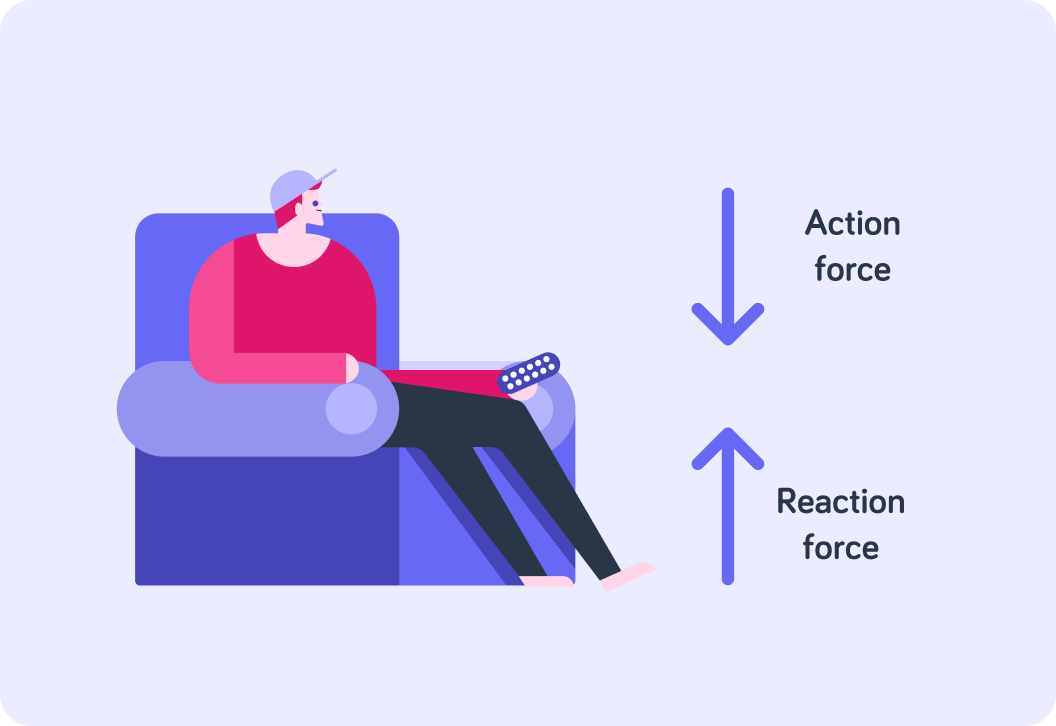YOU ARE LEARNING:
Newton's Third Law

Newton's Third Law
You will understand what Newton's Third Law states about the forces of interacting objects.
When you sit on a sofa, you exert a downward force on the sofa. What do you think stops you from falling straight through it in the direction of the force?

When you sit in a chair, your body exerts a downward force on the chair, and the chair exerts an upward force on your body.
We call these types of pairs of forces interaction pairs, or action-reaction pairs.

Now, what do you think? The upward force and the downward force are ...
A) equal in magnitude. B) different in magnitude.


If you push a wall, exerting a force of 10 N on it, what is the magnitude of the force that the wall exerts on you?

What do you notice about the magnitude and direction of interaction pairs of forces?

You have just explained Newton's third law of motion! According to Newton's third law, whenever two objects interact they exert equal and opposite forces on each other. This is often summarised as 'for every action there is an equal and opposite reaction'.
According to Newton's third law, for every action force there is an equal and opposite reaction force. If a bowling ball hits a pin, pushing it to the right, what is the effect of the reaction force?

If you push against a wall, exerting a force of 3 N on it, the wall ...

Do the action and reaction force act on the same object, or different objects?

You know that a resultant force is needed to cause a change of motion, so if the action and reaction forces are always equal you might be wondering how any object moves! The fact that the action and reaction forces act on different objects explains this. If we were looking at the forces acting on a car in motion, it is only the forces acting on the car which would affect is state of motion, and not the force the car exerts on the road.
The book is resting on a table.
It is in equilibrium.

Which best explains how we know that the book is in equilibrium?
A) The action-reaction forces are balanced. B) The normal contact and weight forces are balanced. C) There are no forces acting on the book.


The forces shown in the diagram do not represent Newton's third law. Which of the following statements explains why?
A) The two forces are both acting on the book. B) The weight is equal to the normal contact force. C) It is in equilibrium.


Newton's third law forces are not shown in the diagram, but they still exist.
The book exerts a force on the table, and the table exerts a force of the same magnitude onto the book.

